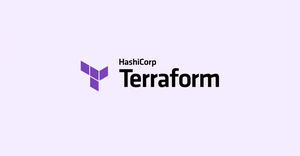Introduction
In this tutorial, we will explore how to generate SSH keys using Terraform. Terraform is a powerful infrastructure as code tool that allows for the provisioning of infrastructure through code. SSH keys are cryptographic keys that allow for secure communication between a client and a server. Generating SSH keys with Terraform can streamline your infrastructure deployment process, ensuring secure connections without manual intervention.
Prerequisites
- Terraform installed and configured on your system.
- Basic understanding of Terraform syntax and structure.
- An understanding of SSH keys and their use in secure communications.
Generating a Basic SSH Key Pair
Let’s start by generating a simple SSH key pair. This example will cover generating a standard RSA key pair.
resource "tls_private_key" "example" {
algorithm = "RSA"
rsa_bits = 2048
}
Output:
tls_private_key.example: Creating...
algorithm: "" -
> "RSA"
rsa_bits: "" -
> "2048"
private_key_pem: "" -
> "-----BEGIN RSA PRIVATE KEY-----
...
-----END RSA PRIVATE KEY-----"
public_key_pem: "" -
> "-----BEGIN PUBLIC KEY-----
...
-----END PUBLIC KEY-----"
In the code above, the tls_private_key resource is used to generate a RSA key with 2048 bits. The output will be the private and public keys in PEM format. This is a simple and straightforward method to generate a basic SSH key pair using Terraform.
Advanced SSH Key Generation
For those requiring a higher level of security, generating an ECDSA key pair or setting up additional options can provide added benefits. Here’s how you can generate an ECDSA key pair:
resource "tls_private_key" "advanced_example" {
algorithm = "ECDSA"
ecdsa_curve = "P384"
}
Output:
tls_private_key.advanced_example: Creating...
algorithm: "" -
> "ECDSA"
ecdsa_curve: "" -
> "P384"
private_key_pem: "" -
> "-----BEGIN EC PRIVATE KEY-----
...
-----END EC PRIVATE KEY-----"
public_key_pem: "" -
> "-----BEGIN PUBLIC KEY-----
...
-----END PUBLIC KEY-----"
This example utilizes the ECDSA algorithm with the P384 curve, known for stronger security compared to RSA keys of similar size. With Terraform, generating this type of key is just as simple as the previous example but provides stronger security guarantees.
Automating SSH Key Injection into Cloud Infrastructure
Now that we have our SSH keys, the next step is to use Terraform to inject these keys into our cloud infrastructure to enable secure SSH access. The following example demonstrates how to add an SSH key to an AWS EC2 instance:
resource "aws_key_pair" "deployer_key" {
key_name = "deployer_key"
public_key = tls_private_key.example.public_key_pem
}
resource "aws_instance" "example_instance" {
ami = "ami-a1b2c3d4"
instance_type = "t2.micro"
key_name = aws_key_pair.deployer_key.key_name
# Specify other instance settings
}
This code snippet illustrates how the generated public SSH key can be integrated into an AWS EC2 instance configuration. It allows you to automatically enable secure SSH access to your EC2 instance when it’s provisioned.
Conclusion
Generating SSH keys with Terraform is an efficient way to ensure the security of your server communications right from the deployment phase. Whether you’re setting up a basic RSA key pair for standard security or an ECDSA key for enhanced security, Terraform provides a streamlined approach to manage SSH keys alongside your infrastructure as code. Incorporating automated key injection into your cloud infrastructure further simplifies the process, making it a seamless part of your deployment workflow. By leveraging Terraform for SSH key generation, you can maintain a high level of security with minimal manual intervention.


